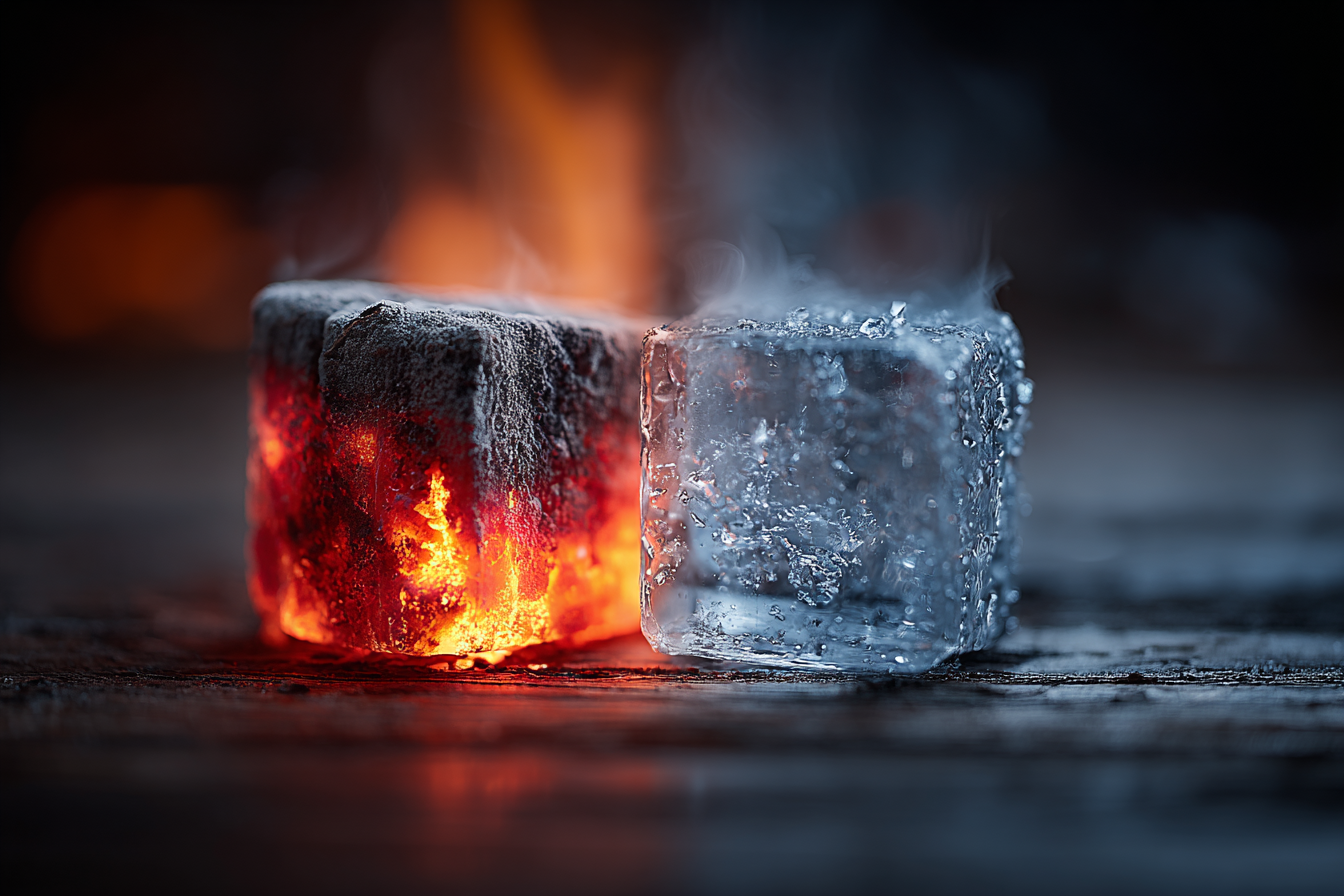Ice-versus-fire rituals go back to Sparta, where warriors alternated cold baths fed by mountain runoff with hearth-warmed pools. Romans scaled the practice with frigidarium–caldarium cycles, a form of contrast therapy that exploited extreme temperatures centuries before anyone measured nitric-oxide release. In the 1920s American physical therapy clinics rebranded it as “contrast baths,” prescribing 3-round protocols of 1-2 minutes cold and 3-5 minutes warm to calm muscle spasm and boost range of motion.
Modern locker rooms look similar, only marble has become stainless steel and digital sensors now track surface and intramuscular temperature. Infrared pods, cryo-chambers, and Infrared Sauna cabins share space with state-of-the-art plunge tanks—evidence that the ancient yin-yang still matters to elite athletes chasing every percentage point of athletic performance. The biological logic is simple: cold squeezes vessels, heat opens them. This pump effect flushes waste products, moderates swelling, and primes white blood cells for the healing process, all while dampening nociceptor traffic that drives muscle soreness.
Evidence-guided pathways to improved training output
Contrast therapy, or cold contrast therapy, is smaller in the literature than single-modality cold therapy, yet recent trials outline clear gains for people who log intense workouts and Intense exercise:
- DOMS defense and strength preservation. Recreational lifters who completed four cycles of cold water immersion at 10 °C and Warm water at 40 °C for 3-5 minutes each retained 94 % of baseline force after heavy eccentrics, while controls lost 22 %. Markers of delayed-onset muscle soreness and muscle weakness also fell.
- Faster power rebound. A Sports Medicine meta-analysis showed that alternating 1-min 11 °C plunges with 2-min 39 °C soaks improved 24-h countermovement-jump height and sprint time, a practical edge for tournaments stacking multiple bouts.
- Pain and swelling moderation. A 2025 scoping review across 74 studies reported lower VAS pain, joint circumference, and perceived muscle tension after contrast sessions than passive rest, with minimal adverse events.
- Enhanced perfusion and elasticity. Combat-sport athletes completing 20 min of 12 °C/38 °C cycling displayed higher quadriceps blood flow and tissue elasticity, correlating with restored exercise performance within 24 h.
Mechanistically, the temperature pendulum blunts pro-inflammatory cytokines, accelerates lactate and creatine-kinase clearance, and toggles sympathetic tone—leaving athletes looser in connective tissue yet calmer in mindset. Typical field prescriptions alternate cold (ice baths or chilled cuffs) for 1-2 min with hot (sauna or whirlpool) for equal or slightly longer periods, repeating three to five times. Finish on cold if sleep awaits, warm if mobility work follows.
Tailoring the chill-heat cycle to your body
Contrast therapy is a template, not a law. Sprinters fighting muscle fatigue might avoid frigid finishes directly after lifting to protect anabolic signaling, whereas marathoners in peaking phases may choose longer hot bouts to maximize capillarization.
Conversational-AI prompts:
- “Compare my last three sessions—where would contrast therapy shave the most sore-muscle hours?”
- “Simulate taper week with 1-2 minutes cold and 3-5 minutes hot; predict my power-output delta.”
- “Given today’s HRV dip, should I end on heat for mental health benefits?”
- “Create a playlist that cues breathing tempo to each temperature swing.”
Feed your bot HRV, limb skin temperature, and subjective muscle soreness. Wearables that log tissue heat can nudge you toward cooler starts on leg-day squats or an Intense exercise block, and recommend swapping an ice bath for an Infrared Sauna when sympathetic arousal is already high.
Building your own contrast therapy playbook
| Training goal | Cold : Hot ratio | Session time | Frequency | Notes |
|---|---|---|---|---|
| DOMS control after heavy eccentrics | 1 min cold / 1 min hot | 12 min | 2–3× week | Best for sore muscles and muscle tension |
| Neural freshness in taper | 45 s cold / 2 min hot | 10 min | Daily | Great before skill sessions |
| Post-injury edema | 2 min cold / 1 min hot | 15 min | As advised | Monitor swelling & range of motion |
Safety guardrails. Skip plunges if you have uncontrolled hypertension, Raynaud’s, open wounds, or are <12 h removed from frostbite-risk exposure. Pregnant athletes and those with cardiac implants need medical clearance.
Stacking tools. Pair the final warm bout with mobility drills to lock in expanded range of motion, or add a compression sleeve during cold to magnify venous return. Some pros pair contrast cycles with mindfulness apps—slow exhales in warmth, box-breathing in chill—to reinforce parasympathetic tone that aids mental health.
Key takeaways
- Alternating extreme temperatures acts as a vascular accelerator, sweeping metabolic waste products while dosing the nervous system with controlled stress and relief.
- Research supports tangible perks for DOMS, muscle fatigue, and readiness—even as cold can briefly dampen hypertrophy signaling.
- Start simple: four rounds of 10 °C cold baths and 40 °C warm soaks, 1 min each, three times per week, then tweak.
- Use data—skin temp, HRV, mood—to decide whether to end on cold (sleep) or warm (mobility).
- If dizziness, numbness, or chest pain strikes, abort and re-warm—that contrast yin-yang should energize, not endanger.
Flowing forward
Contrast therapy persists because its rhythm is elemental: constrict then release, stress then ease. For athletes who punish tissue daily, that hot-cold duet can be the simplest safeguard against muscle weakness and plateaued exercise performance. Build your ritual, measure the results, and let each plunge-sauna cycle write the next chapter of your recovery yin-yang.
